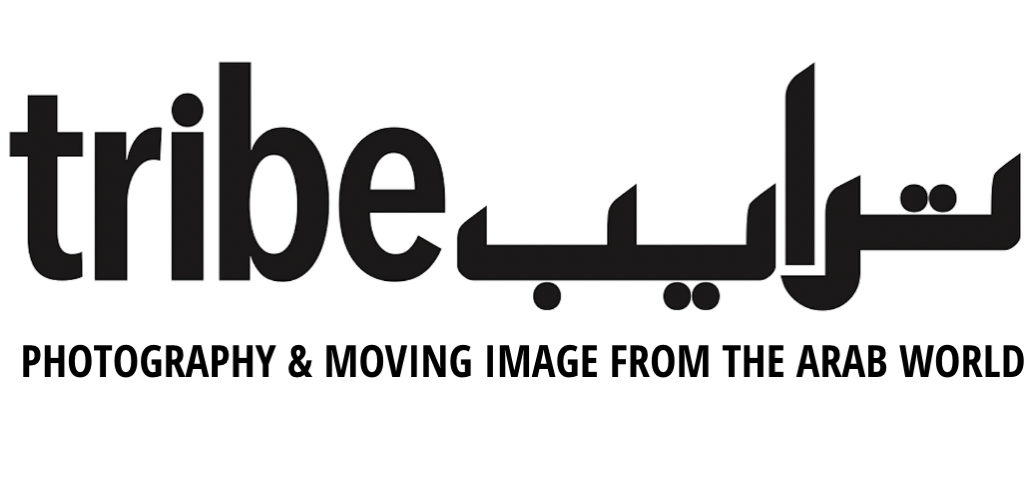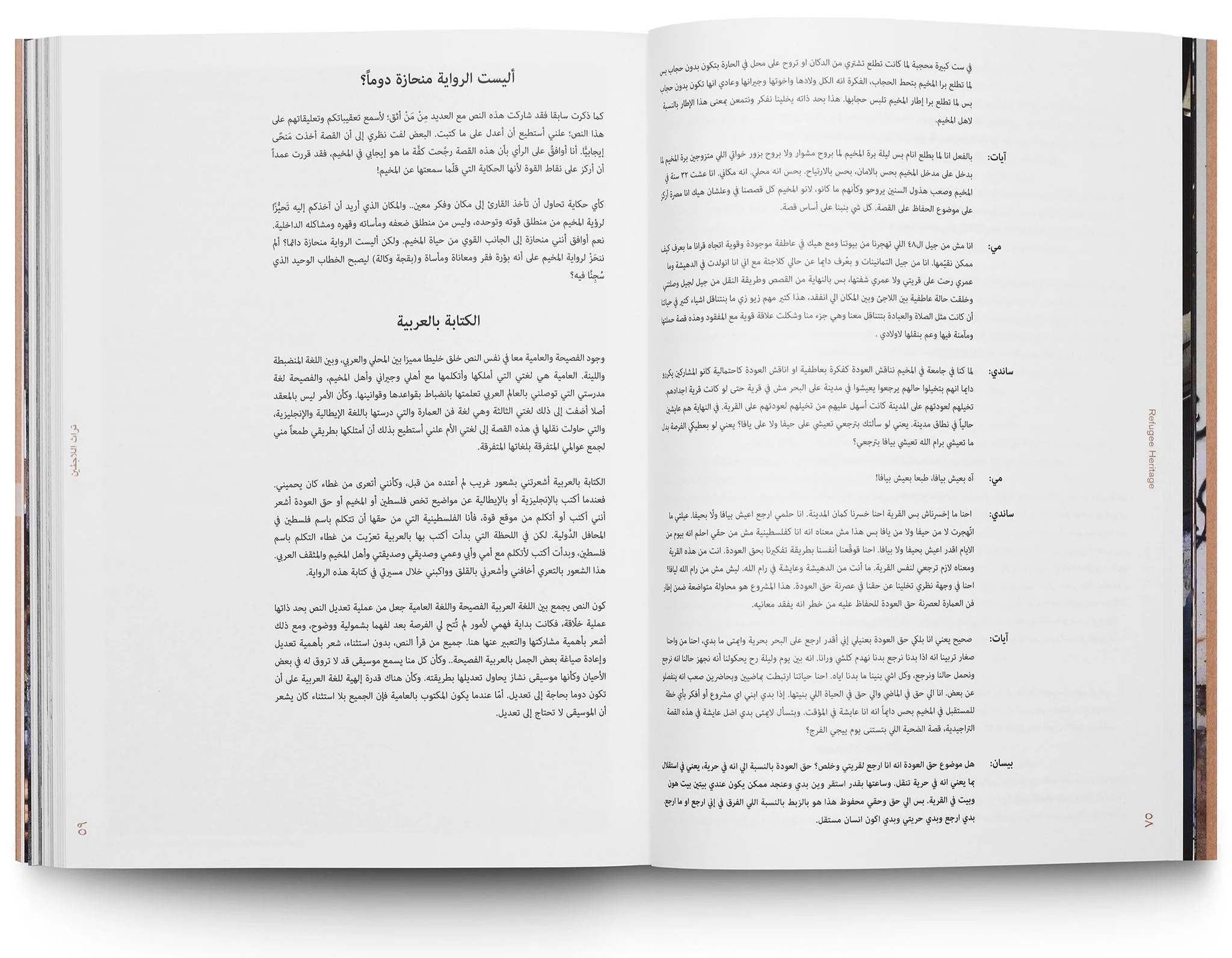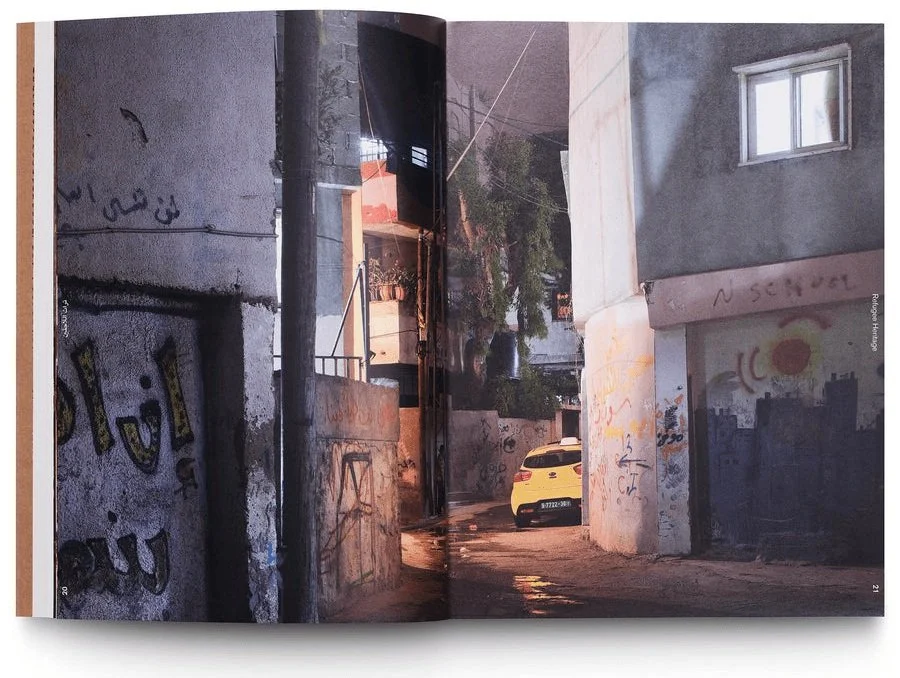SANDI HILAL, ALESSANDRO PETTI, ‘Refugee Heritage, تراث اللاجئين’
REFUGEE HERITAGE, تراث اللاجئين
SANDI HILAL, ALESSANDRO PETTI
Size: 22 x 30 cm
Pages: 328
Published by Art and Theory Publishing, 2021
Refugee camps are established to be demolished. As a paradigmatic representation of political failure, they are meant to have no history and no future; and to be forgotten. The history of refugee camps is constantly being erased and dismissed by states, humanitarian organizations, international agencies, and even by refugee communities themselves, who fear that any acknowledgment of the present condition in the camp may undermine their right to return to their place of origin. The only history that is recognized is one of violence and humiliation. Yet the camp is also rich with stories, narrated through its urban fabric.
In tracing, documenting, revealing, and representing refugee history beyond the narrative of suffering and displacement, Refugee Heritage is an attempt to imagine and practice “refugeeness” beyond humanitarianism. Such a process requires not only rethinking the refugee camp as a political space: it calls for redefining the refugee as a subject in exile and understanding exile as a contemporary political practice capable of challenging the status quo. Recognizing “the heritage of a culture of exile” constitutes a new perspective from which social, spatial, and political structures can be imagined and experienced, beyond the idea of the nation-state.
This book-dossier attempts to deactivate the claims of objectivity and universalism contained in the conventions followed by UNESCO in determining World Heritage status; it presents different narratives that do not fit within such statist discourse, reorienting heritage towards non-hegemonic forms of life and collective memory. By reusing, misusing, and redirecting UNESCO World Heritage guidelines and criteria, Refugee Heritage challenges definitions of heritage and their colonial foundations, asking instead how architecture is mobilized as an agent of political transformation.
Refugee Heritage is comprised of the first four parts of the Annex 5 UNESCO nomination dossier for the inscription of Dheisheh Refugee Camp as a World Heritage Site, and an Appendix containing architectural interventions, conversations, and responses, produced over the last six years with the participation of organizations and individuals, politicians and conservation experts, activists, and governmental and non-governmental representatives. The publication of this book has been made possible with the generous support of the Royal Institute of Art, Stockholm; Iaspis, the Swedish Arts Grants Committee’s International Programme for Visual Artists; Van Abbemuseum; Art Jameel in Dubai. The book was presented on the occasion of the 17th International Architecture Exhibition, La Biennale di Venezia, 2021.




